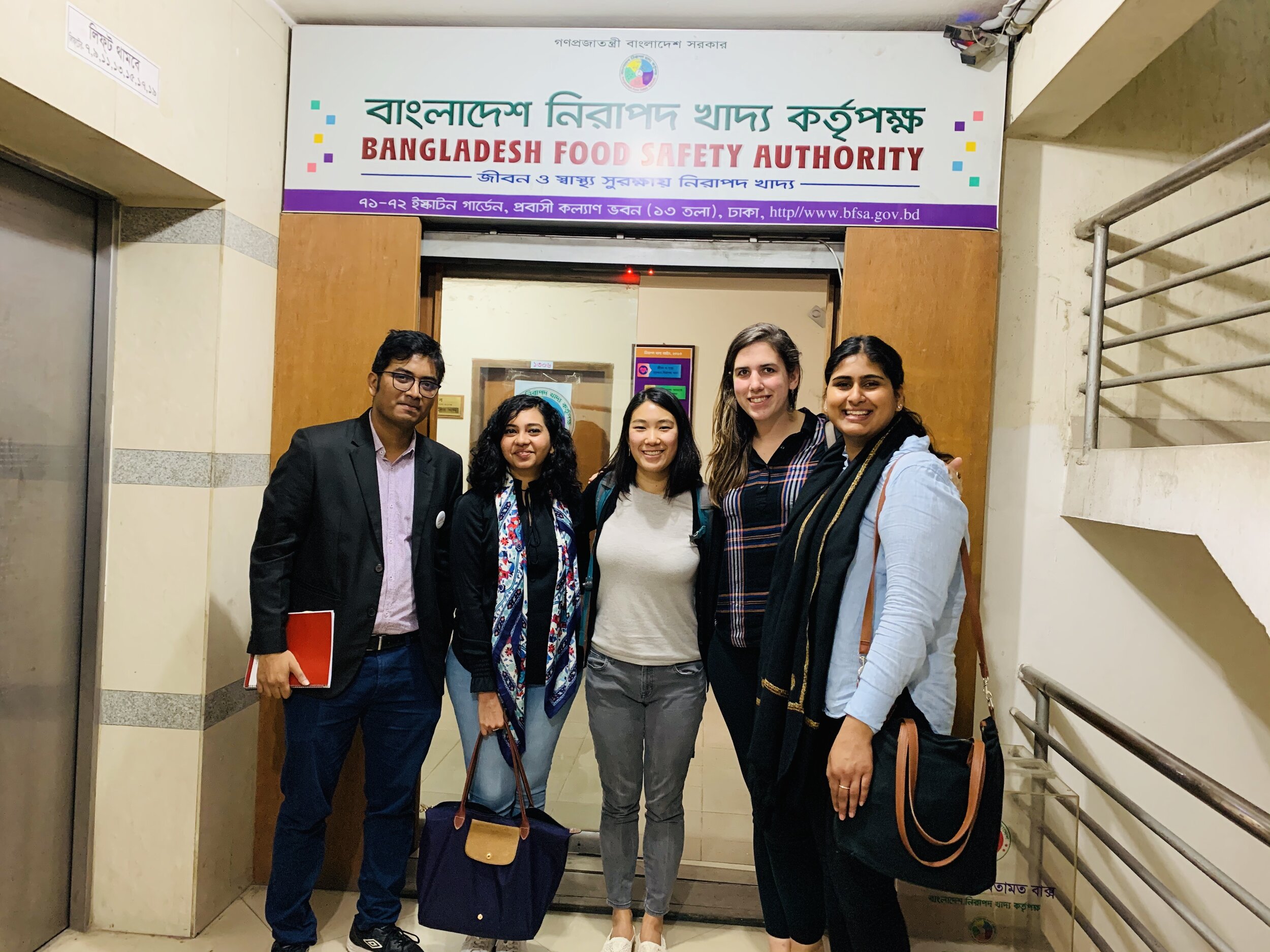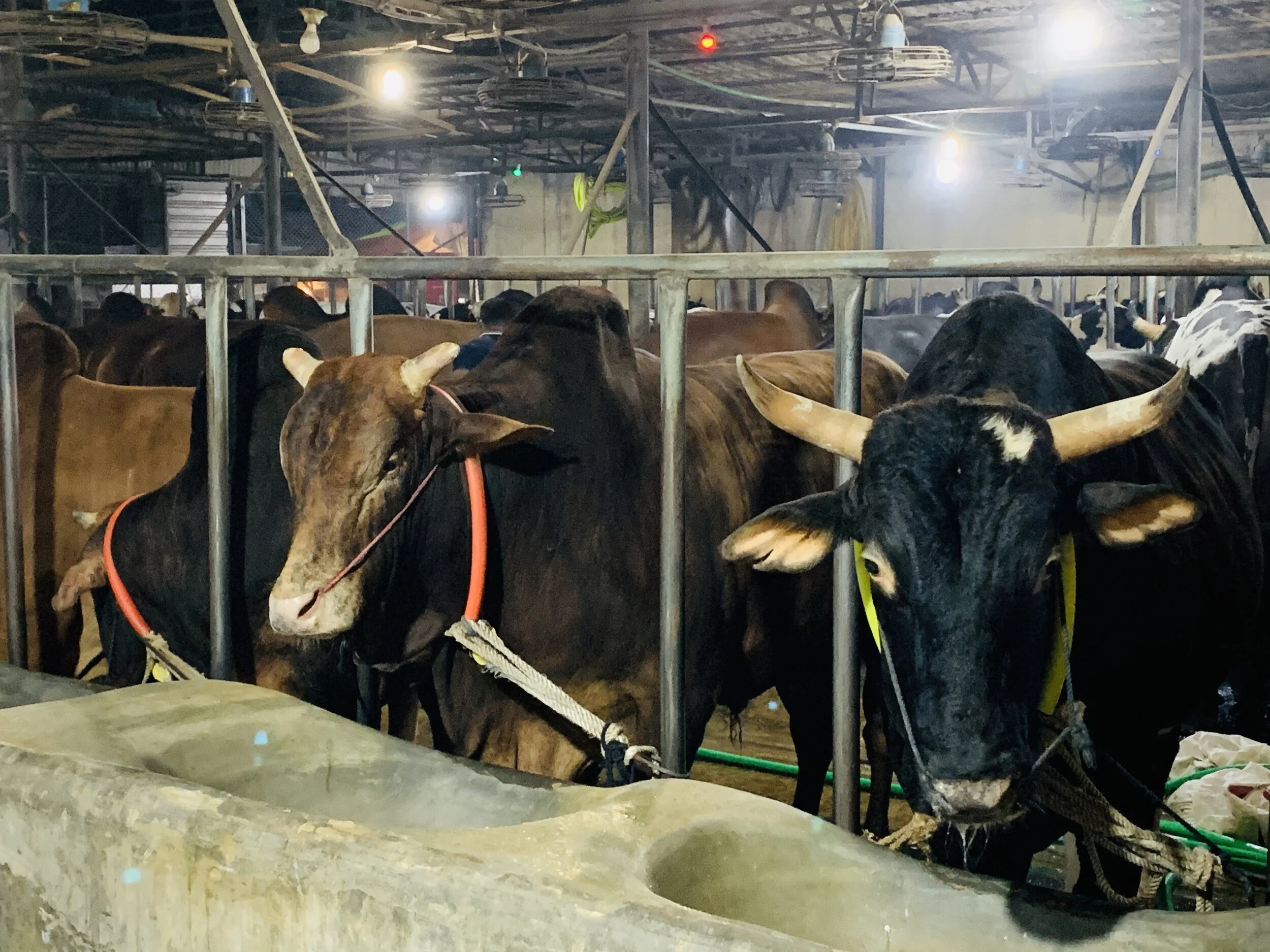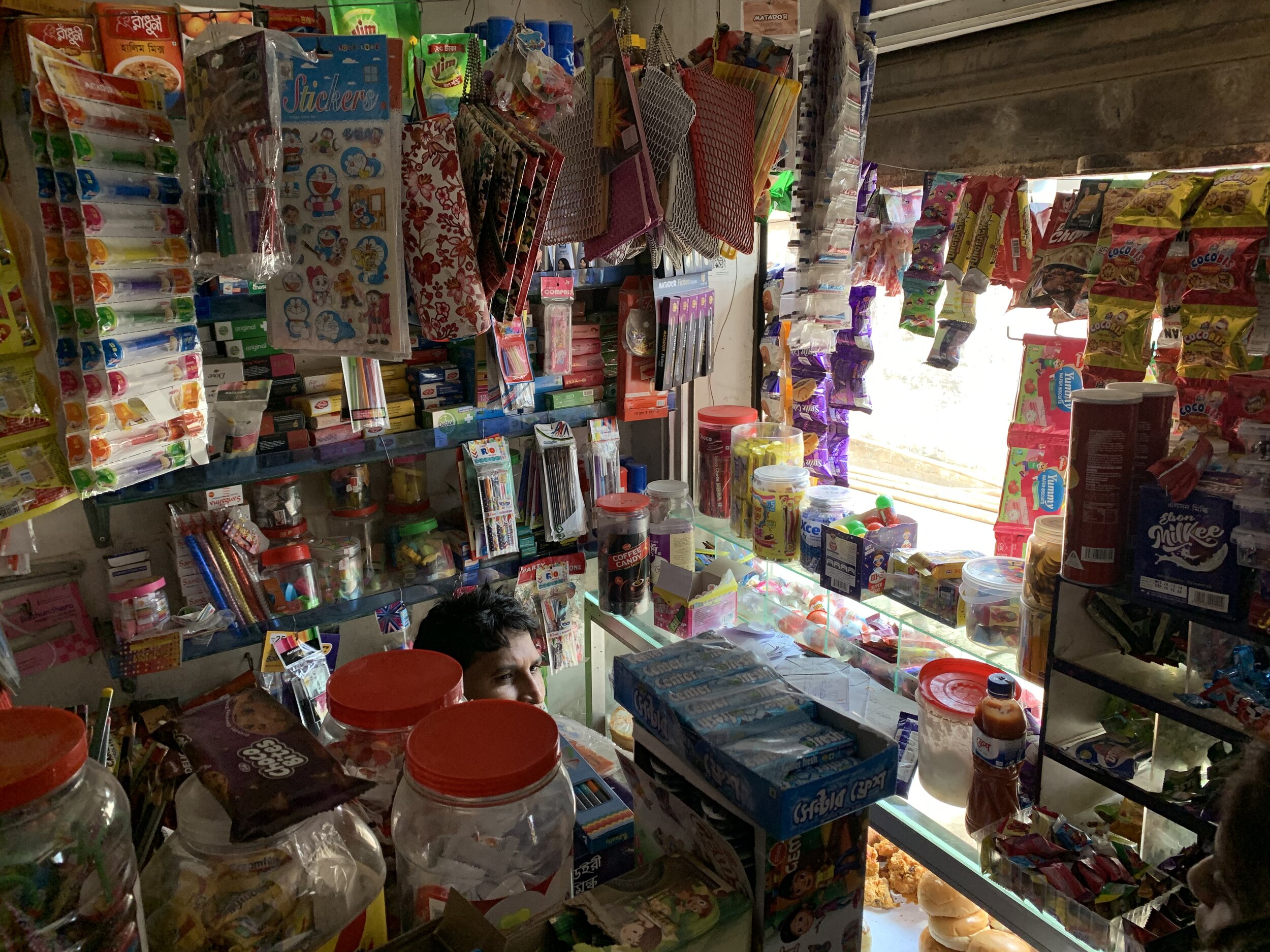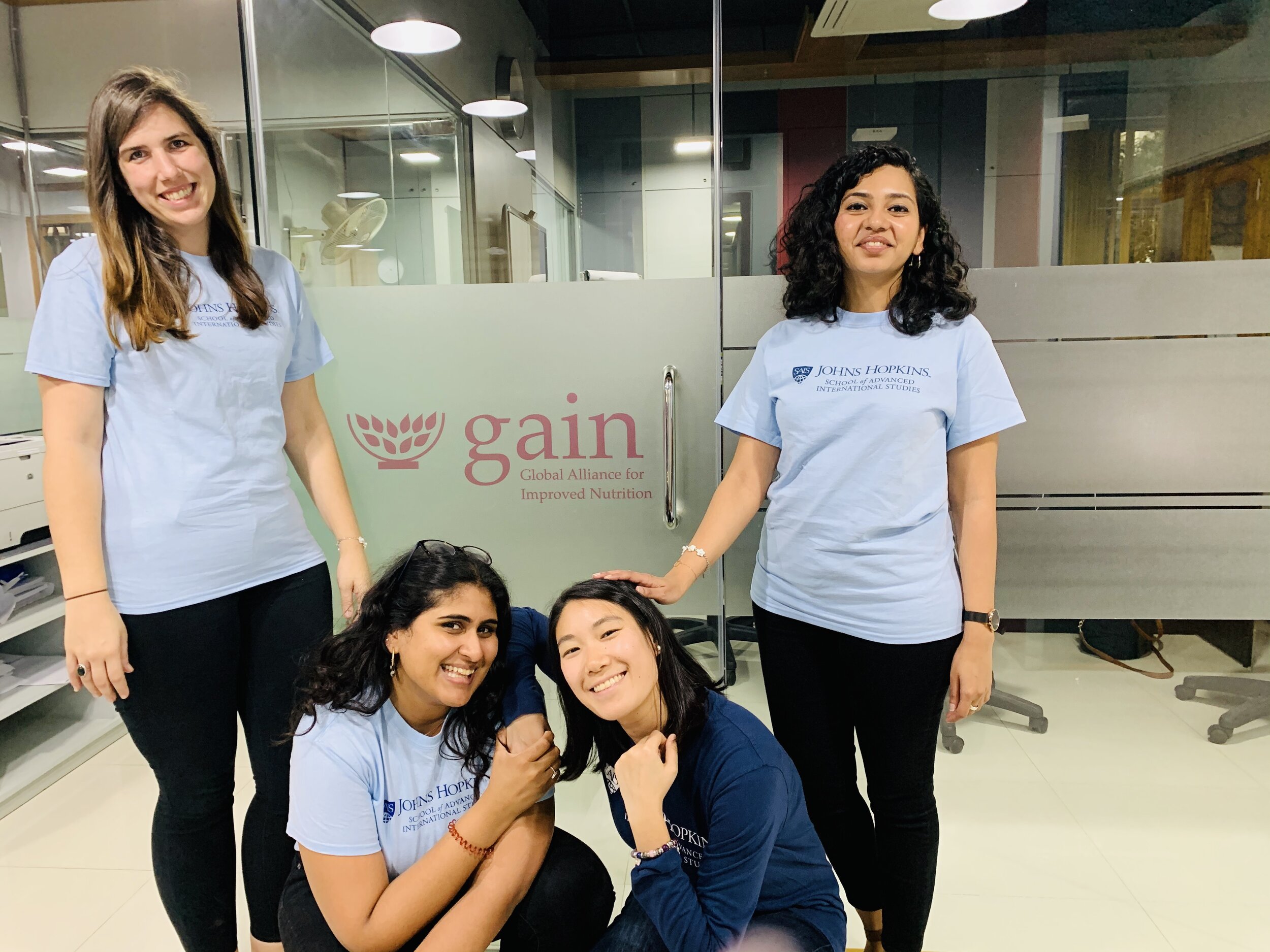BY LAURA SHELTON, SHAMAILA ASHRAF, SANNIDHI SRINIVASAN, AND CAROLINE HUI
Laura Shelton, Shamaila Ashraf, Sannidhi Srinivasan, and Caroline Hui are second-year International Development students who traveled to Dhaka, Bangladesh to examine the supply chains of flavored milk packages and fuchka (a local street food) to understand how it was being consumed and where nutritional interventions could be made. This research was done with a focus on adolescent girls as the end consumer and has been made possible by the Global Alliance for Improved Nutrition (GAIN).
The IDEV Practicum allows students to work directly with public, private and non-governmental organizations as a capstone to their graduate studies. The 2020 IDEV Practicum Blog is a seven-part series that chronicles the travels of IDEV students who take on client projects over winter break.
Studying commodity supply chains in any environment requires a deep look into the behavior, motivation, information, availability, and culture surrounding that commodity. Consumed during school between classes and coaching sessions, or purchased in bulk by parents, flavored milk is widely consumed by schoolgirls who are in need of increased nutritional care.
In Bangladesh, dairy milk consumption remains low - at about 27.31 grams per capita - which is only 10% of the WHO recommended daily (about 250 grams). This consumption level has been decreasing since 2005 and is the lowest in the South Asian region. The nutritional and health impacts of decreased milk consumption can be seen in stunted growth, low-weight, and acute malnutrition in children.
At the beginning of our fieldwork, we interviewed adolescent girls, private dairy companies, government officials, nutrition experts, and NGO activists in Dhaka - trying to understand how the supply chains for dairy milk and fuchka were constructed and where an organization like GAIN could intervene to support nutritional augmentation of these items. But as we delved deeper into understanding consumer behavior, we noticed a key actor missing from our analysis - the media.
The media has played a critical role in how Bangladeshis shape their consumption patterns. In 2018, fourteen Bangladeshi dairy producers such as Aarong, PRAN, Milk Vita, Igloo, and Danish were court-ordered to stop production of their pasteurized milk products after traces of adulteration in the form of lead and antibiotics were found by researchers at the University of Dhaka. Additional studies carried out by researchers found lead, antibiotics meant for humans, and other pesticides in the end-consumer product of these brands. This led to the Bangladeshi High Court ordering the Bangladeshi Food Safety Authority to test the products over the summer.
These high-profile cases of adulteration were picked up by media outlets who discouraged consumers from buying dairy products or buying only powdered dairy products. When the results of the adulteration cases were completed, the authorities reported that the additives found in the dairy products were up to standard and that adulteration, while still an issue, should not deter consumption. However, consumption continued to decrease, and umbrella organizations began requesting additional third-party testing, which was further reported on by local and regional news outlets.
Almost six months later, when we were in Dhaka, we asked questions about changes to dairy processing taken on by Aarong, PRAC, and Milk Vita. All three companies said that their products go through multiple levels of testing to ensure quality and safety, but their response was weighed by an annoyance with media and “consumer culture” for continuing to demand imported powdered milk over domestic products. The quality of powdered milk was not further evaluated, but remarks were made by interviewees that the quality of these imported goods is lower than what consumers assume.
So, how does this tie in with the adolescent girls of Dhaka and their consumption of flavored milk? Supply chains are traditionally viewed as a series of actors who contribute to the value of a product, but they also reliy on external forces shaping demand, processing standards, and supply interventions. Parents in Dhaka continue to purchase flavored milk for their daughters, but are not as eager to buy pasteurized white milk over a powdered milk alternative. Local dairy unions, such as the Bangladeshi Dairy Farmers Association, are trying to sustain their businesses by encouraging consumers to pick local over foreign. Private companies like PRAN are using targeted marketing strategies to promote milk consumption broadly. Government actors are developing transparent accountability measures to ensure quality. However, these efforts are not done in conjunction with media outlets who can effectively connect with Bangladeshis. In the words of a PRAN representative, “increasing the nutritional value of milk is only meaningful if Bangladeshis drink more milk to begin with.”
To read about the work that other IDEV Practicum teams did this year, visit this page.
Photo Credit: GAIN Practicum Team







